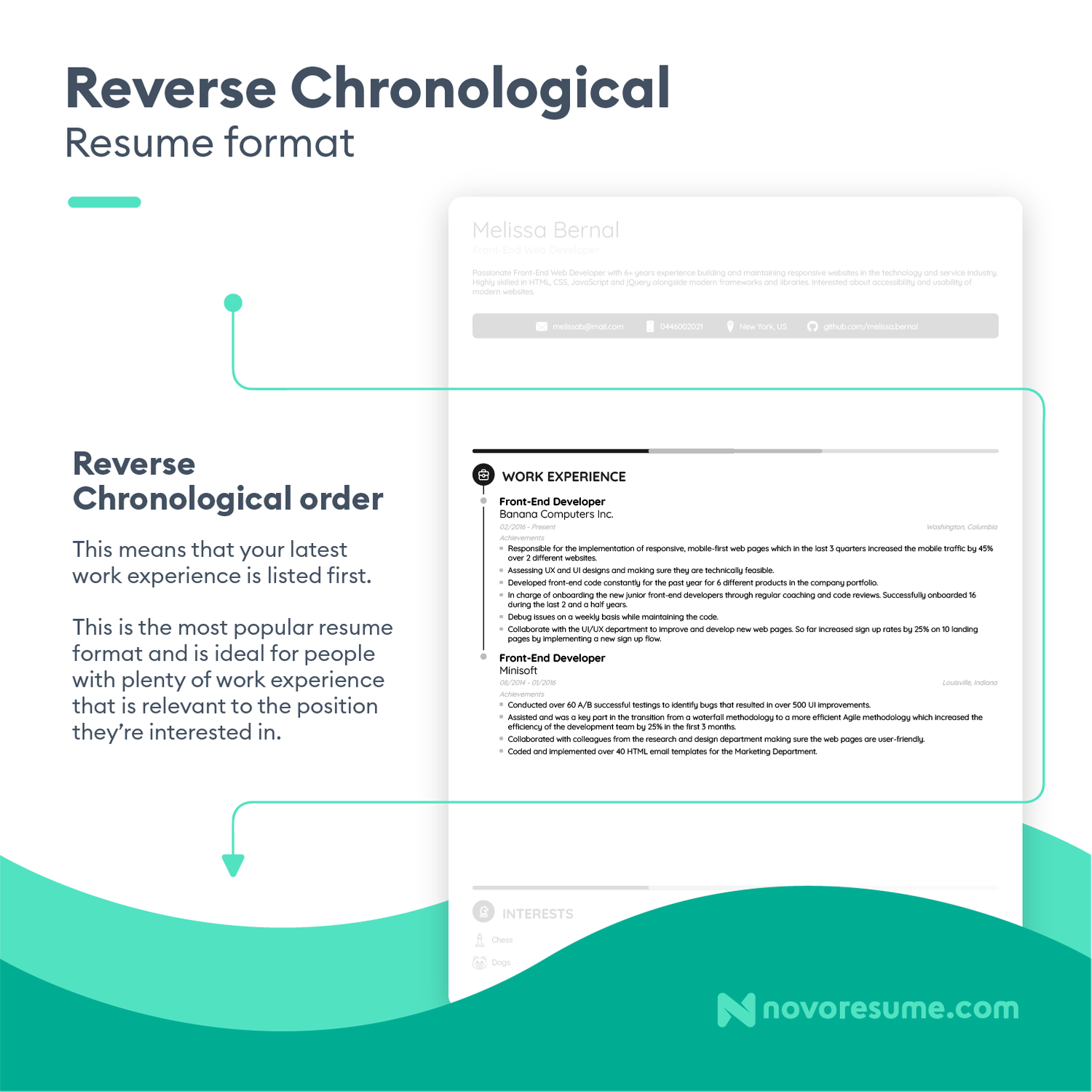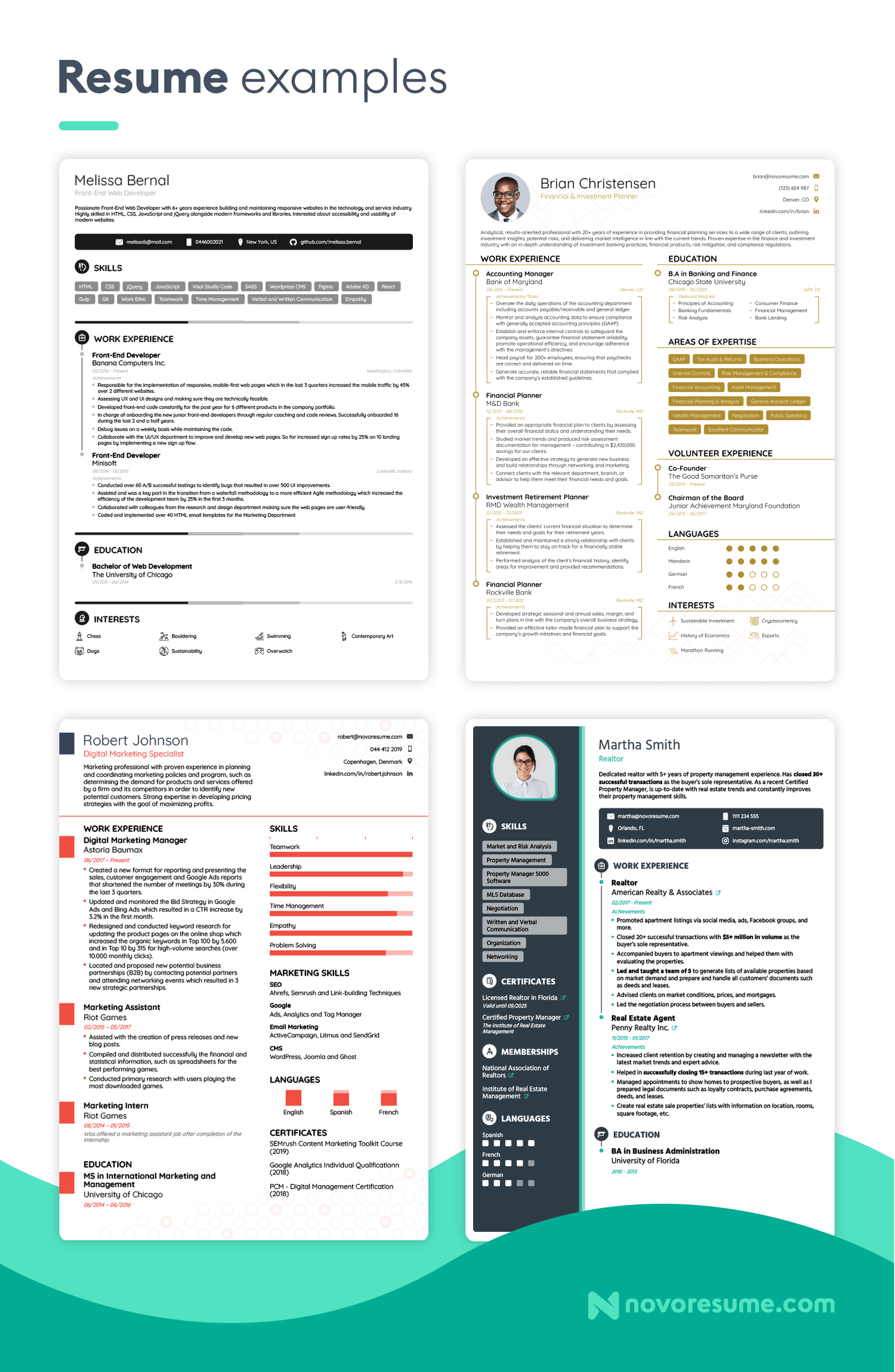Looking to land your next job in finance?
You’ll need a compelling financial analyst resume to stand out from the competition.
At the end of the day, it doesn’t matter how good you are at analyzing financial data if you can’t prove it to the hiring manager at your dream company.
Luckily, that’s exactly what this article is here for.
We’re about to teach you all you need to know about how to write a financial analyst resume, including:
- Job-Winning Financial Analyst Resume Example
- How to Write a Financial Analyst Resume (Step-by-Step)
- Free Financial Analyst Resume Template
And more! Let’s dive right in, starting with:
Job-Winning Financial Analyst Resume Example

What’s a better way to get started with your resume than to get inspired by a compelling financial analyst resume example, right?
The above resume does a lot of things right, such as:
- Follows the chronological resume format. While there are other resume formats out there, the chronological one is both the most popular, and the best one for the job.
- Lists contact information the right way. It includes a phone number, a professional email address, a LinkedIn URL, and a location.
- Catches the recruiter’s attention with a resume summary. This financial analyst resume summary shows the recruiter the candidate is relevant at a glance.
- Convinces the recruiter that they’re the right person for the job with an achievement-oriented work experience section. Achievements help show the recruiter how you stand out from the rest of the candidates.
- Uses bullets to make the financial analyst resume easy to follow. The recruiter has hundreds of other resumes to review. By using bullets, you make it easier for them to read your resume and understand your background.
- Includes a concise education section. Since the candidate has a lot of work experience, they don’t focus as much on their educational history.
- Lists the right hard and soft skills. A strong financial analyst should possess both types of skills (and show them off on their resume).
- Includes optional resume sections to fill up the space and make the resume even more compelling.
How to Write a Financial Analyst Resume (Step-by-Step)
Found the financial analyst resume example interesting?
Awesome - time to start working on yours!
In this section, we’re going to walk you through 8 essential steps for creating a compelling financial analyst resume, starting with:
#1. Format Your Financial Analyst Resume Right
While there are 3 types of resumes formats you can use, the best option is the reverse-chronological format, which looks as follows:

The format starts off with the most recent work experiences and then goes backward in time.
Once you’ve decided on the format, you need to work on the style and layout of your resume. Here’s what that involves:
- Don’t go over the 1-page limit. Unless you’re a professional with 15+ years of experience, chances are, you don’t need more than a single page.
- Pick a professional font. Some of our favorites are Ubuntu, Times New Roman, and Roboto.
- Use 11-12 pt font size for the body text in your resume.
Free Financial Analyst Resume Template
Want to create a compelling resume without all the hassle of working on the formatting, style, layout, and the like?
Well, it’s possible!
All you have to do is pick one of our 8 free resume templates.
The formatting work is done for you, all you have to do is fill in your contents, and you’re ready to land your dream job!
And the best part? Our resume templates look absolutely slick compared to the typical black-and-white templates:

#2. Include a Contact Information Section
Once you’re done formatting your resume (or you’ve picked one of our free resume templates), it’s time to start working on your resume contents.
The first step here is to include your contact information, which includes:
- Name and surname.
- Professional title. Your title should match the one mentioned in the job description.
- Phone number.
- Professional email address. E.g. [name] + [last name] @gmail.com.
- Location. The city, state, and country are enough, no need to mention your home address.
- (Optional) LinkedIn URL. If your LinkedIn profile is up-to-date, you can include a URL in your contact information section.
Here’s what your contact information section should look like once you’re done with it:
John Doe
Financial Analyst
123-123-1234
john.d@gmail.com
Boston, MA
linkedin.com/in/johnd
#3. Write an Attention-Grabbing Financial Analyst Resume Summary (or Objective)
The next section in your financial analyst resume is the resume summary.
A resume summary, in a nutshell, is a “preview” of your resume. It helps the recruiter understand whether you’re qualified without having to read your resume in its entirety.
Done right, a financial analyst resume summary should include:
- Your job title (“Financial Analyst”)
- Your years of experience (“With 6+ years of experience in the field”)
- Your top 1-2 achievements (“Experienced in identifying wasteful processes and cutting spend by over 12% at Company X”)
- Your top skills (“Skilled in risk management, data validation techniques, and data visualization”).
Here’s a practical example of what this looks like on a resume:
- Senior financial analyst with 6 years of experience seeking a role at Company X. Past achievements include helping drive costs down by over 12% at Company Y by eliminating wasteful processes. Skilled in risk management, data validation techniques, and more. CPA-certified.
Don’t have a lot of work experience? You might want to use a resume objective instead. Read our guide to learn more.
#4. Focus on Achievements to Stand Out from Other Applicants
The next section on your financial analyst resume is the work experience section.
First things first, start by formatting the section as follows:
- List your work experiences reverse-chronologically. Start with your latest/current experience and go back in time from there.
- For each of your roles, include the following information: title, company name, dates employed, and 3-5 responsibilities and achievements.
- For older roles (think, jobs from 5-10+ years ago), you can include less than 3 responsibilities/achievements.
And here’s how that would look on your resume:
Financial Analyst
Company X
07/2015 - Current
- Collected, analyzed, and managed quantitative data.
- Created in-depth financial reports that lead to over 12% cost reductions in 2020.
- Prepared weekly reports and led presentations for training new staff.
- Reported directly to the CFO.
Now, if you want your work experience section to truly stand out from your competitors, here are some tips on how to make that happen:
- Focus on achievements when possible. The recruiter knows what your responsibilities were - they want to know how you excelled at the role instead. So, if possible, include achievements instead of responsibilities.
- Quantify your achievements. Saying “cut expenses” is one thing, saying “cut expenses by 12% in 2020 by identifying and eliminating wasteful processes” is something else entirely. Including information on results, timeframe, and actions taken helps give the hiring manager a better idea of your work history and skills level.
- Skip on irrelevant work experience. The hiring manager doesn’t care about your job waiting tables 12 years back during university, so you can safely skip it.
Applying for an entry-level financial analyst role? Check out our article on how to create a no-experience resume.
#5. Include Your Educational Background
On to the next section - education.
This one’s relatively straightforward, just include your educational history as such:
- Include your latest degree on top of the section. Start off with the degree name (e.g. B.A. in Finance), institution name, and years attended.
- If you have a second degree, include that too. Follow the same format.
- If you have a B.A. or an associate’s degree, feel free to skip including your high school information.
Here’s how the education section should look like on your financial analyst resume:
B.A. in Finance
Chicago University
08/2013 - 05/2017
If you’re a recent university graduate lacking in work experience, you can also add information about the courses you’ve attended in university to give the recruiter an idea of your knowledge:
B.A. in Finance
Chicago University
08/2013 - 05/2017
Courses Attended:
- Corporate Finance
- Asset Management
- Risk Management
#6. List the Right Skills for the Job
The next step to perfecting your financial analyst resume is including the right skills.
And by “right skills,” we don’t mean listing out every single skill you’ve learned.
Rather, you need to specifically include the skills that are going to help you do your job as a financial analyst right.
Some of the most in-demand financial analyst skills in 2023 are:
15 Essential Financial Analyst Skills
- Financial Modeling
- Financial Accounting
- Managerial Accounting
- Asset Management
- GAAP
- Financial Reporting
- Risk Management
- SAP
- Statistical Analysis
- Data Validation Techniques
- Communication
- Persuasion
- Process Improvement
- Attention to Detail
- Leadership
#7. Use The Optional Resume Sections (to Make Your Resume Even More Compelling)
Do you still have some space on your financial analyst resume? You can use some of these optional resume sections to fill up your resume to cover the entire page.
While these sections won't land you the job on their own, they can help you stand out from applicants with the same level of experience and skills.
The optional sections are:
- Certifications. As a financial analyst, there are a lot of certifications you can get to help attest to your skill set. E.g. CFA, CPA, FMVA, and others.
- Languages. In 2023, knowing an extra language or two is always an asset, regardless of what job you’re applying for.
- Hobbies & Interests. This section can help show the hiring manager who you are as an individual (as opposed to a professional) and (potentially) allow you to build rapport with your interviewer.
Here’s how these optional sections would look like on your financial analyst resume:
Languages
- German - Native
- English - Fluent
- Spanish - Intermediate
Certifications
- Chartered Financial Analyst (CFA) Certification (4). 02/2015 - 02/2016
- Financial Modeling and Valuation Analyst (FMVA). 03/2012 - 08/2012
Hobbies & Interests
- Artificial Intelligence
- Hiking
- Mindfulness
#8. Make Sure Your Financial Analyst Cover Letter is as Compelling as Your Resume
At this point, your resume probably already looks very compelling…
But we’re not done just yet!
You need to create a financial analyst cover letter that’s just as good as your resume.
Here are some tips on how you can do this:
- Start the cover letter by addressing the hiring manager with their full name or title. E.g. “Dear Margaret.” Sure, you could do the traditional “Dear Sir or Madam,” but including a name or position shows the recruiter that you did your research.
- In the introduction of your cover letter, include your job title, years of experience, top 1-2 achievements, industry experiences, and any of your other top selling points.
- In the body section of your cover letter, you can include things like more detailed skills, responsibilities, work history, and optionally, information on why you’d like to work at the company you’re applying for.
- Finish up the cover letter with a call to action. E.g. “Would be more than happy to discuss my work history more in-depth over an interview.”
Struggling with your cover letter? Check out some of our best resources on the topic:
Key Takeaways
And that’s the gist of it!
That’s all you need to know in order to create a compelling financial analyst resume and land the job.
Before you go, let’s do a quick recap of the most important learning points we covered in this article:
- Use a resume summary to grab the hiring manager’s attention from the get-go.
- In your work experience section, focus on achievements over responsibilities. Quantify your achievements when possible.
- Include both hard and soft skills in your skills section.
- Include any certifications that you might have. E.g. CPA, CFA, etc.
- If you have some extra space in your resume, you can also include extra sections such as languages or hobbies.


